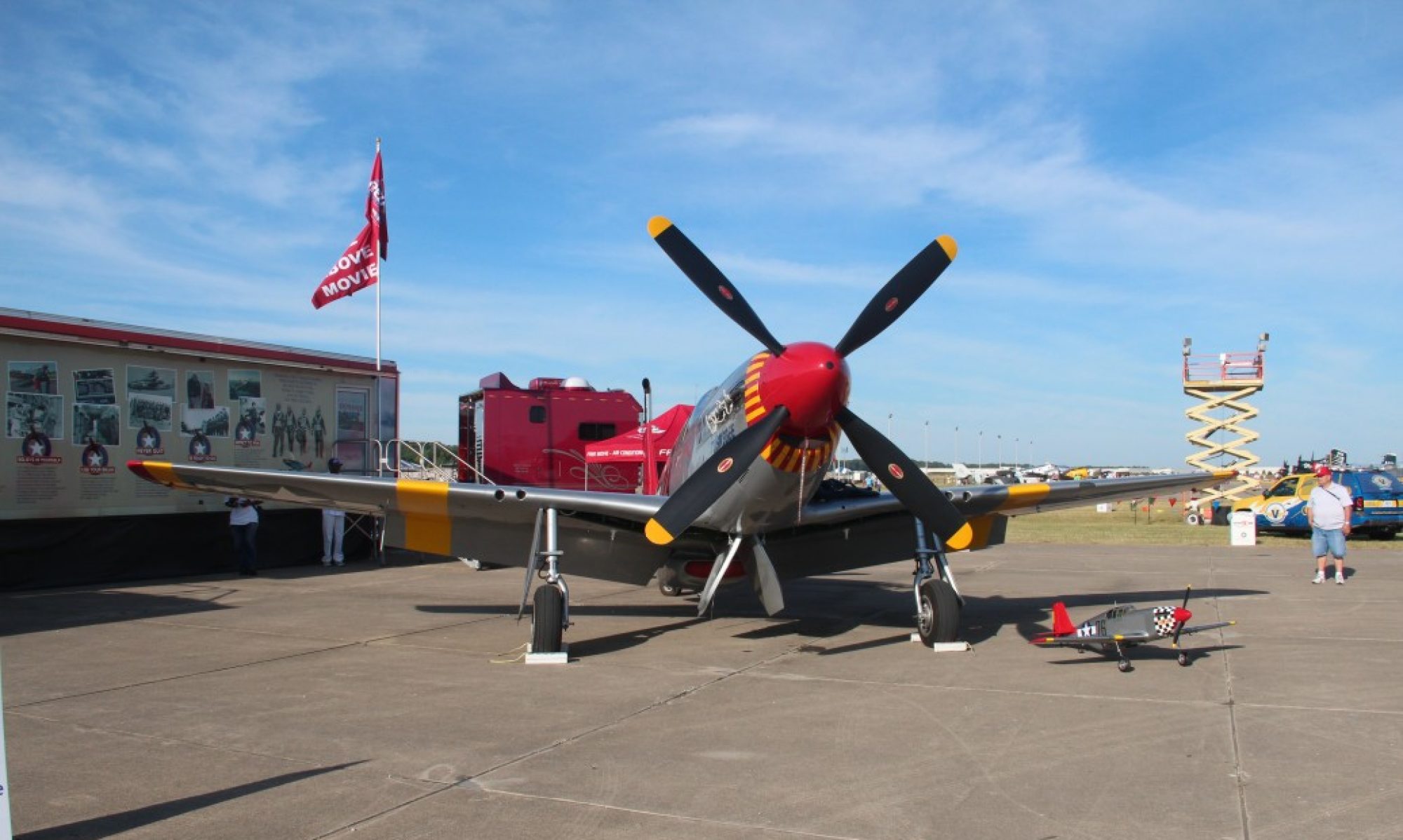My WildHare Slick with DLE-55 power has always been a great airplane to fly. This is my second one and I have learned a lot since I flew one first about 5 years ago. As I learn more about mixes, balancing, setup, etc… I continue to make minor changes both for performance and to suit my own preferences. The most recent changes are a new Falcon 23×9 CF propeller and a new fuel tank. First I’ll talk about the tank and the reasoning behind it.
I had noticed that with all the other setup at least in the ballpark, I could not set my elevator to have enough throw to get a clean break in my spin entries AND at the same time keep it from snapping out if I pulled a tight loop. A friend of mine pointed out that this could be because the plane was to nose heavy. That seemed plausible as I have a tendency to setup my aircraft that way. I’m leery of getting into a tail heavy setup as that makes the plane to sensitive and jerky on the sticks. Doing some quick flying checks it did appear I was even more nose heavy than I normally fly so I started looking to remove some nose weight or shift it back.
I’ve never been fond of the standard tank setup in these gas birds as the tubing hardens or softens over time (depending on what type you use) so I had gone to a RotoFlow tank which has internal brass tubing with a heavy clunk that rotates in the back of the tank. A couple years of use has proven they are really very nice systems. The problem in this case is the tank is in front of the balance point and therefore contributing to the nose heavy issues. The one problem with these tanks is that they are heavier than about any other setup. I have a 24oz tank in my Slick which is really far more than needed if you have a reliable pickup system… which it does. That means I could stand to use a smaller tank as well… more weight savings from the tank material as well as carrying less fuel would lighten the plane and shift the balance. Just what the doctor ordered.
I looked around and saw that many folks (especially the 3D crowd) had gone to what I call the “water bottle” tanks. They are made of extremely thin (and therefore light) plastic like most water bottles are now. Though I would be going back to the tubing that will likely harden and necessitate replacement every so often, this is less of an issue since the tank is so easy to get to in this airplane. I found a nice 20 oz bottle from the good folks at B & E Graphix which is preassembled with a nice felt covered clunk and installed it with a savings of about 4 ounces in weight plus carrying 4 liquid ounces less fuel for a nice overall weight savings. This is just in front of the wing tube so won’t be a big balance change but every little bit helps and overall weight savings is good as well. For around $17 it seemed like a pretty good deal.

The second change I made at that same time was to swap my Xoar 23×8 Laminate for a Falcon 23×9 Carbon Fiber. I broke one of my Xoar props recently when a taxi with tailwind turned into a “nose stand” maneuver :-(.
I had heard good things about running one of these with a DLE-55 (which is what I run) and was assured by the vendor that even with my canister (Proflow… it has been excellent so far) it would not drag my motor down any more than the Xoar does. I get about 6200 with the 23×8 but the Falcon looks to be a bit thinner blade so the pitch may not cause as much of an issue. Checking the weight resulted in good news. The Falcon is 1-1.25 ounces lighter than my laminate Xoar. This should help the nose heavy issue quite a bit being as it is weight that is about as far forward of balance as is possible.
After both these changes were accomplished I have done half a dozen flights and noticed my balance is much closer to neutral than before. Still just a touch on the nose heavy side but by only a small margin which makes me very happy. The Falcon gives me a bit more speed on the up lines and seems to still brake enough to keep the down lines from gaining much speed so all in all, an excellent choice of prop for my needs. $70 is not what I’d call cheap but CF props never are! I haven’t tach’d it with the new prop yet but performance seems fine in long pulls so I expect to see about the same RPMs as before. Nicely in the lower power band of this motor and ideal for what I do with the airplane.
Overall both changes seem to have accomplished what I wanted. I encourage anyone with similar desires to try these products out. They seem to be winners.
